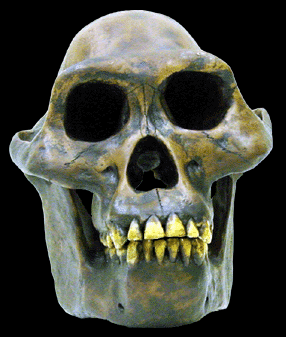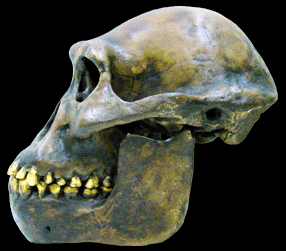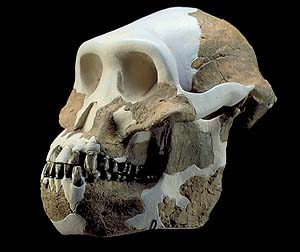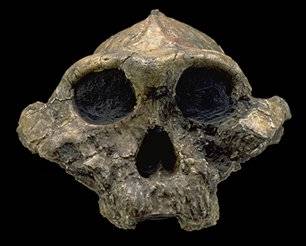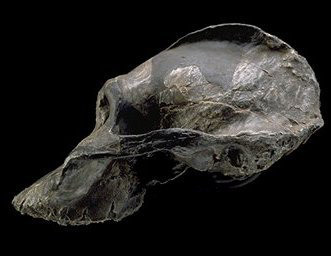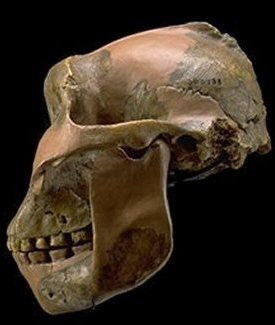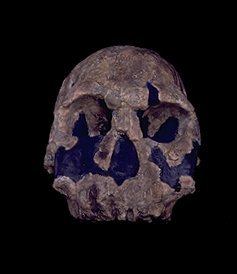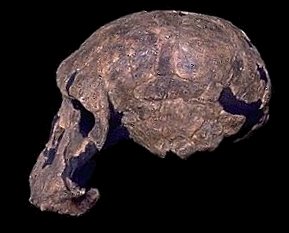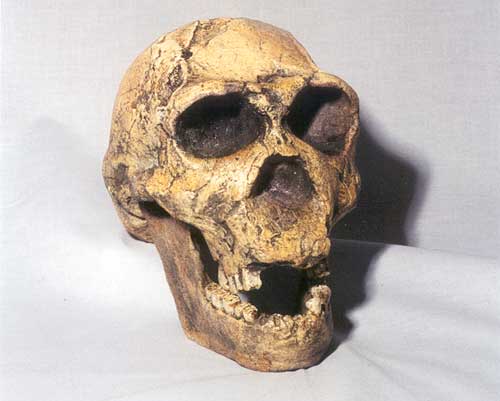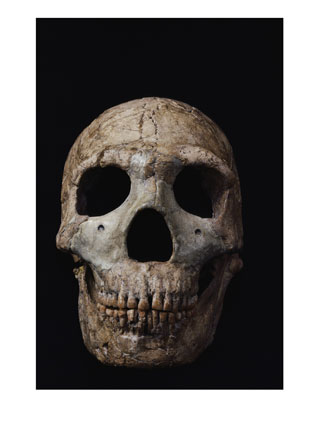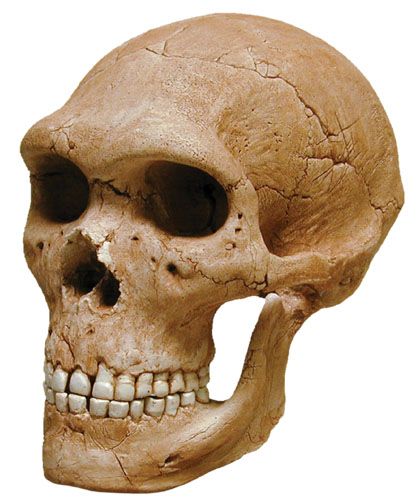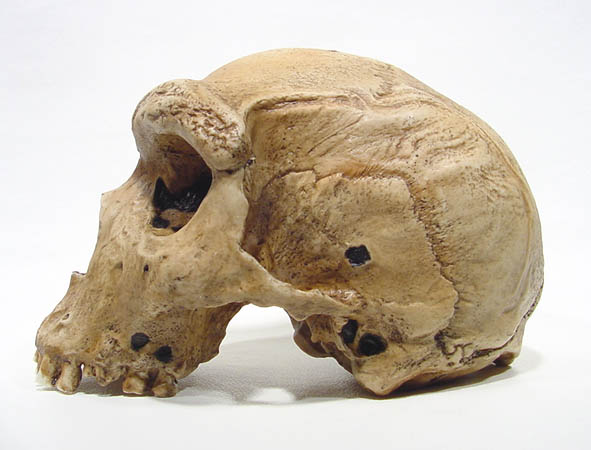TRAIT
|
GRACILE
AUSTRALOPITHS
|
ROBUST
AUSTRALOPITHS
|
EARLY HOMININS
|
LATE HOMININS
|
cranial vault
|
small, elongated
|
small, elongated
|
medium sized, slightly elongated
to sub-rounded
|
medium to large sized,
sub-rounded to rounded
|
sagittal crest
|
usually absent, but may be
present in males
|
present
|
absent
|
absent
|
post-orbital constriction
|
moderate
|
significant
|
slight
|
slight
|
brow ridges
|
large
|
large
|
moderate to large
|
small to large
|
facial profile
|
very prognathic
|
very prognathic, concave or
"dished in"
|
less prognathic, may be concave
|
less prognathic to orthognathic
|
cheek bones
|
moderate
|
large and broad
|
moderate
|
small to moderate
|
nose
|
non-projecting or flat
|
non-projecting or flat |
slightly projecting
|
projecting
|
| mandible |
large
|
very large
|
moderate
|
small to moderate
|
| canine teeth |
large. slightly projecting
|
large, non-projecting
|
small, non-projecting
|
small, non-projecting
|
| molar teeth |
large, broad
|
very large and broad
|
moderate size
|
moderate to small size
|
projecting chin
|
absent
|
absent
|
absent
|
may be present
|


